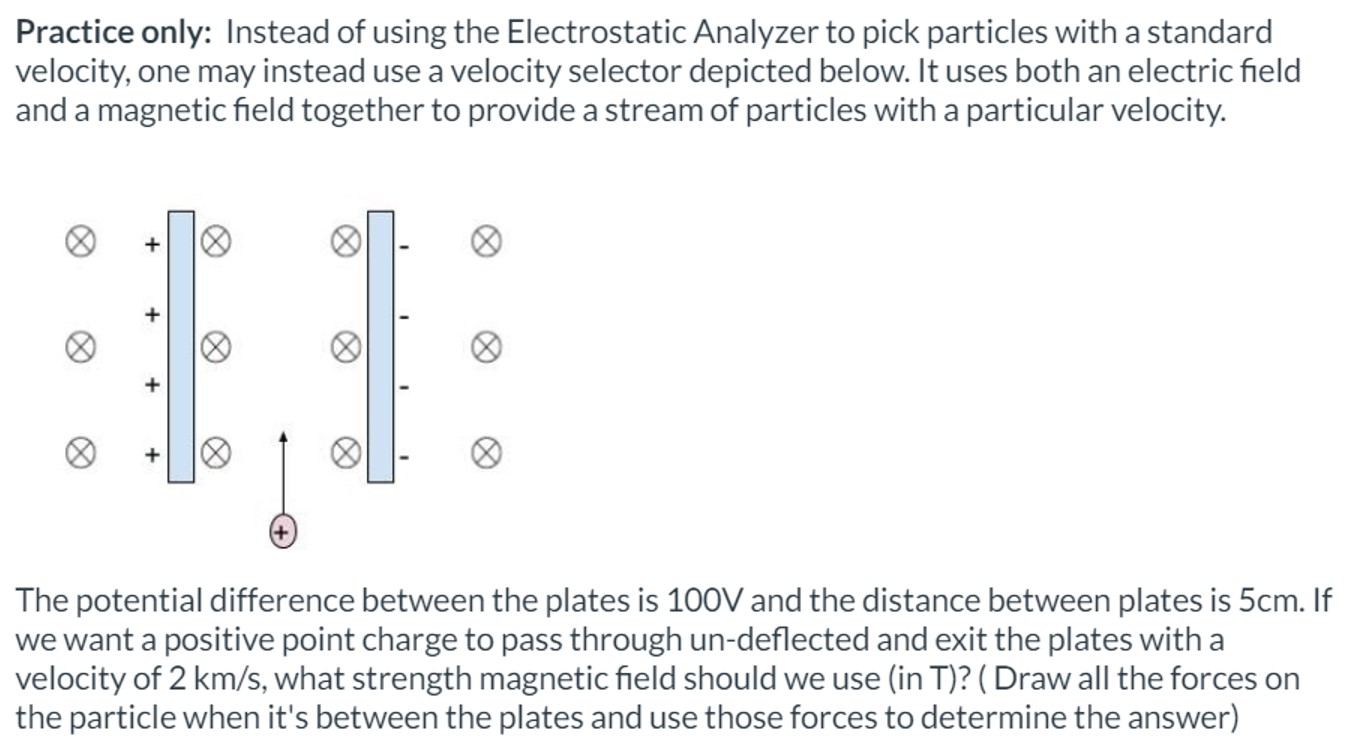Practice only: Instead of using the Electrostatic Analyzer to pick particles with a standard velocity, one may instead use a velocity selector depicted below. It uses both an electric field and a magnetic field together to provide a stream of particles with a particular velocity. The potential difference between the plates is 100 V and the distance between plates is 5 cm. If we want a positive point charge to pass through un-deflected and exit the plates with a velocity of 2 km/s, what strength magnetic field should we use (in T)? ( Draw all the forces on the particle when it's between the plates and use those forces to determine the answer)
